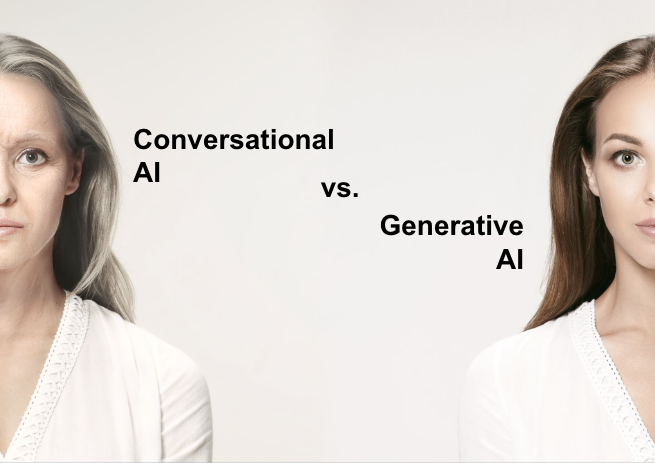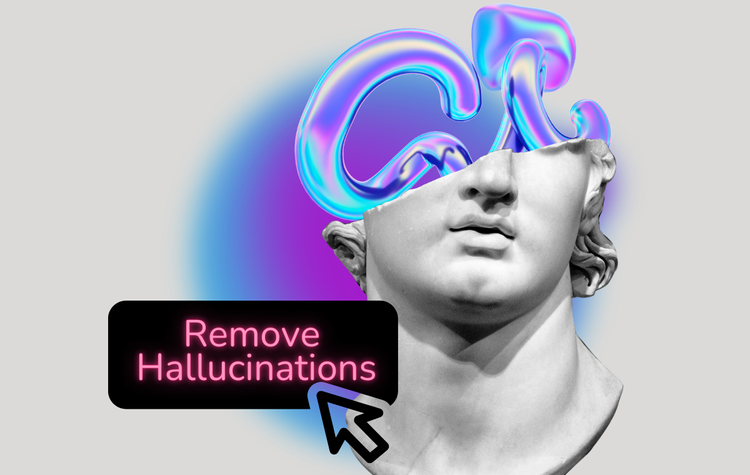The Differences Between Conversational AI vs Generative AI: A Comparative Analysis
Is conversational AI the same thing as generative AI? They're often used interchangeably, but they're actually very different technologies. Read this blog post to understand why.

Introduction
The transformative role of artificial intelligence (AI) in business operations cannot be overstated, particularly in the area of customer support solutions. This article will discuss two different AI technologies, conversational AI and generative AI, providing a comprehensive comparative analysis between them.
Understanding Conversational AI
Conversational AI is a technology that allows computers to conduct human-like conversation with end users. Examples of conversational AI include famous virtual assistants like Siri and Alexa.
The underpinning technologies include Natural Language Processing (NLP) and Natural Language Understanding (NLU). NLP takes input from the user and converts it into a standardized format that is understandable by machines. NLU goes beyond the words and tries to derive meaning and sentiment from the actual words. In conversational AI, both NLP and NLU are necessary for a computer to fully understand what a customer is asking and then select a best response.
In practice, with conversational AI, one has to provide a large number of predefined questions along with their appropriate answers for the AI system to function correctly. After processing and understanding the user’s question, the conversational AI then attempts to match the user’s question to a predefined question and its corresponding answer.
Understanding Generative AI
Generative AI, on the other hand, is an AI technology that produces entirely new and unique content. Unlike conversational AI, a generative AI system doesn't require a pre-set list of questions and answers. Instead, the system simply needs a large volume of content to understand the context and generate appropriate responses.
Generative AIs use Large Language Models (“LLMs”). The LLMs are used to encode both an enterprise’s knowledge base and customers’ questions into mathematical representations known as embeddings. Given the embeddings contained in a customer’s questions and an enterprise’s knowledge base, the LLM generates new, novel content by predicting the next best word in a conversation. For example, if you ask an LLM, “Tell me a “knock knock” joke, the LLM will use its existing knowledge base and will (likely) respond with the next 4 words in the conversation – “Knock Knock. Who’s there?” – and so on.
The most famous generative AI chatbot – ChatGPT – uses an LLM called GPT-3.5 (or GPT-4). ChatGPT, GPT-3.5, and GPT-4 are all developed by OpenAI and offer highly personalized conversational experiences that push the boundaries of AI-powered interactive communication.
Similarities between Conversational AI and Generative AI
Although differing in their underlying technologies, conversational AI and Generative AI have several similarities in the field of customer support.
First, both conversational AI and generative AI require content to be trained. Conversational AI requires a predefined list of questions and answers. Generative AI requires a knowledge base.
Second, both conversational AI and generative AI take as input a customer question and respond with an answer.
Third, both conversational AI and generative serve a similar purposes when used in customer support: enhancing the operational efficiency of customer support teams by providing quick and pertinent responses to user queries, reducing time to first response, and improving customer satisfaction.
Key Differences between Conversational vs Generative AI & Why Generative AI is Superior
Even though conversational AI and generative AI seem very similar, they have some very significant differences.
First, Conversational AI relies on a predefined set of questions and answers, which necessitates a more time and effort spent in system setup and more ongoing maintenance. Generative AI, contrarily, requires only a knowledge base, which can come in the form of:
- An existing knowledge base
- Product data sheets
- Customer support manuals
- Existing FAQs
- Pre-existing questions and answers contained in the enterprise’s help desk solution and/or community support solution
Second, conversational AI often struggles with complex queries. When using conversational AI versus generative AI, you are much more likely to get the response, “I’m sorry, I didn’t understand your question.
Third, conversational AI simply attempts to match the customer’s question to a pre-existing question and its corresponding answer. As a result, conversational AI will often respond with the answer, “I think you were asking a question about x. Here is a document that answers that question,” but both the question and its corresponding answer are incorrect. This frequent experience leads to decreased customer satisfaction.
Generative AI stands out as a better solution due to its ability to handle a larger scope of questions with nuanced, context-sensitive responses.
Conclusion
To recap, whereas both conversational AI and generative AI have their roles in customer support, the scalability and efficiency offered by generative AI indisputably render it a superior choice for businesses.
Uncover the potential of generative AI for your enterprise today. Request a demo of Gleen AI, the most ready AI solution valid for extensive enterprise use-cases, and start your generative AI journey.
You can also experience a generative AI chatbot's flexibility firsthand by creating your own GenAI chatbot in the Gleen playground.
Additional Resources:
Is your generative AI project stuck in the Mud?
https://gleen.ai/blog/is-your-generative-ai- project-stuck-in-the-mud/
The comprehensive guide to white-label chatbot solutions https://gleen.ai/blog/the-comprehensive-guide-to-whitelabel-chatbot-solutions/
How to choose an AI chatbot: A MaslovianApproach
https://gleen.ai/blog/how-to-chose-an-ai-chatbot-a-maslovian-approach/



